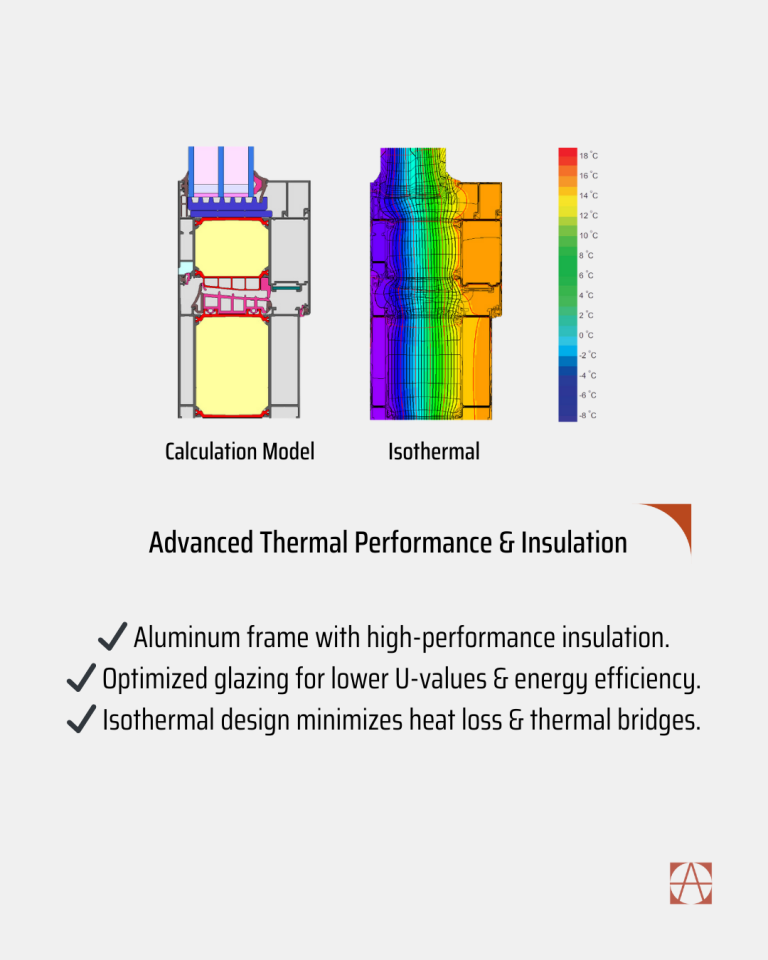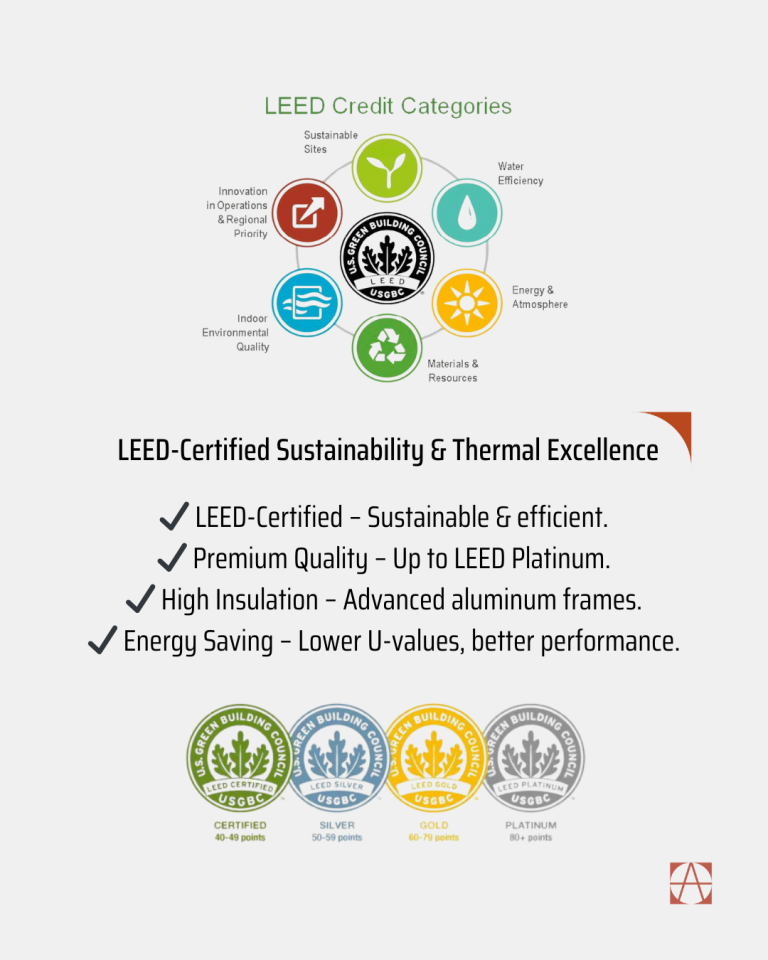Inspiration
LEED Certifications and Energy Efficiency: A Comprehensive Guide for Sustainable Buildings
What is LEED Certification?
LEED (Leadership in Energy and Environmental Design) is an internationally recognized certification system that promotes the design and construction of energy-efficient, eco-friendly, and healthy buildings. Developed by the U.S. Green Building Council (USGBC), this certification evaluates a building’s sustainability performance across multiple categories.
✔ Sustainability and Efficiency – LEED-certified buildings consume less energy and water, improve waste management, and enhance indoor air quality.
✔ Premium Quality – Certifications range up to LEED Platinum, recognizing projects that meet the highest sustainability standards.
✔ High Insulation – Advanced aluminum framing systems significantly enhance thermal insulation, meeting LEED requirements.
✔ Energy Saving – Lower U-values minimize heat loss and improve overall building performance.
Energy Efficiency and Thermal Insulation
To reduce energy consumption, thermal insulation is a critical factor. Aluminum frames and high-performance glazing solutions enhance thermal efficiency and help meet Passive House standards.
✔ High-performance aluminum frames – Ensure excellent thermal insulation, minimizing energy loss.
✔ Optimized glazing solutions – Lower U-values provide superior energy efficiency.
✔ Isothermal design – Prevents thermal bridges, maintaining a stable indoor temperature.
Why Are LEED-Certified Buildings Important?
LEED-certified buildings are not only environmentally friendly but also offer lower operational costs, healthier indoor environments, and increased property value. To contribute to a sustainable future and enhance energy efficiency, construction projects should prioritize materials that comply with LEED standards.
Aluminum plays a major role in sustainable architecture. Its durability, recyclability, and energy-efficient solutions make it a key material for eco-friendly buildings.



